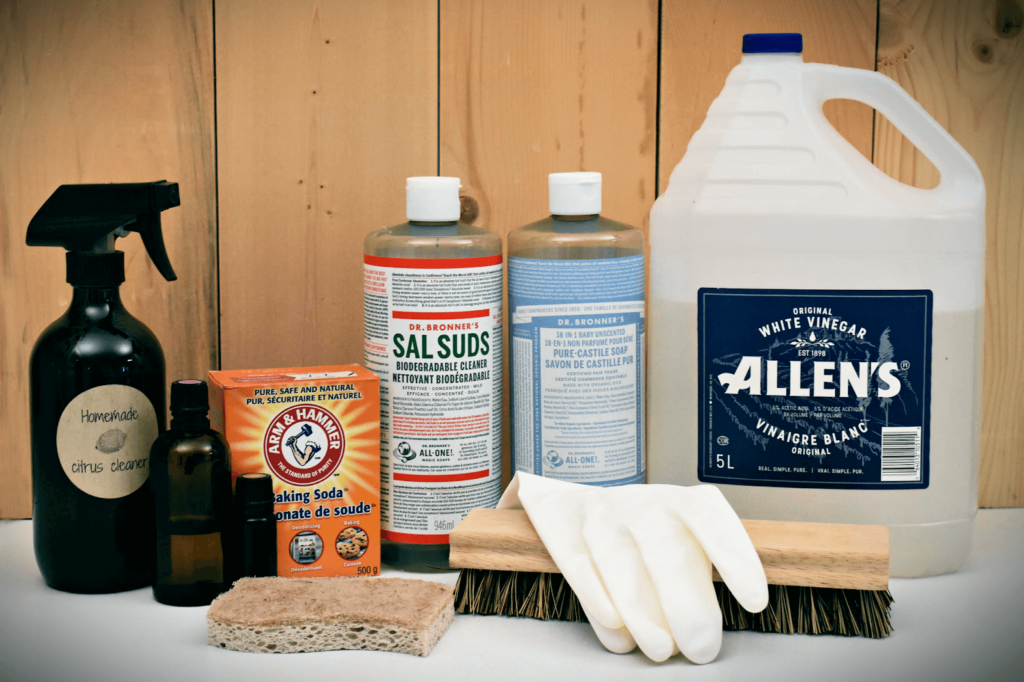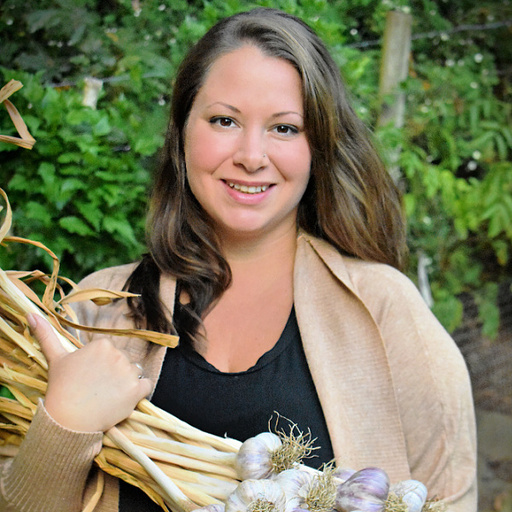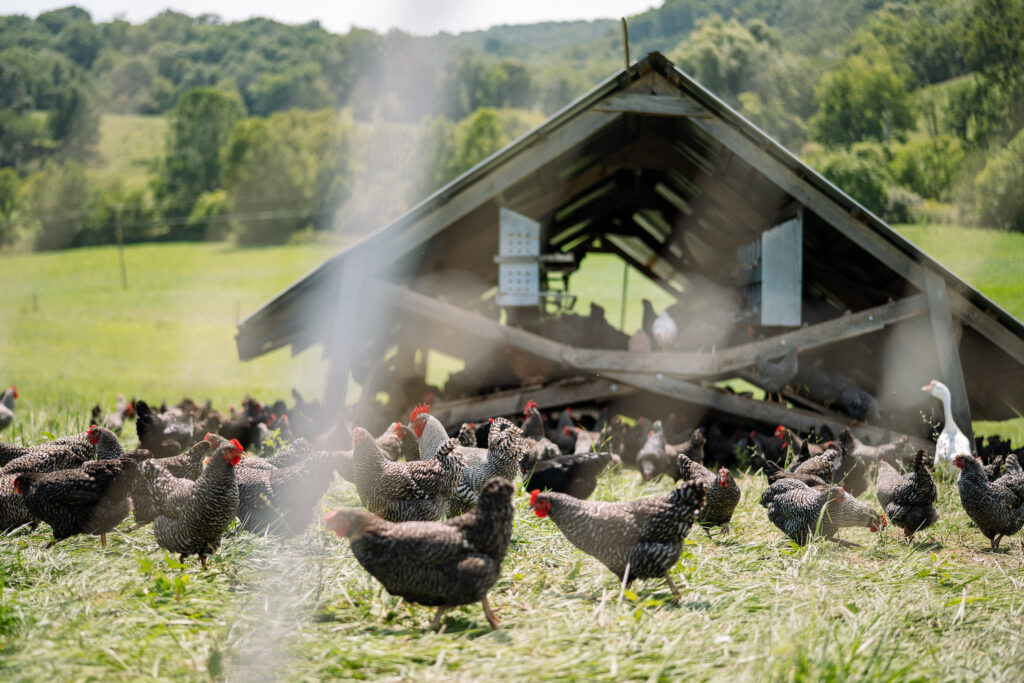When it comes to herbal medicine, most folks tend to gravitate first to the aerial plant parts (leaves and flowers). Perhaps this is because the aerial parts are so easily accessible. Roots require more hard work and determination to harvest and prepare, but I assure you, they’re worth the extra effort.
Roots are also endlessly intriguing. They remind us of the slow, patient, humble work that all good things seem to have at their foundation. They remind us of all the unseen elements stitched together to form our life in this world. They also remind us that not all darkness is to be feared. Even in their slow, hidden, underground existence, roots manage to transform the fire of the sun into rich inulin and sweet polysaccharides, holding onto that fire until the light returns.
Come fall, once the flurry of garden activity has died down and the first frost has come and gone, I drop my broadfork into the rich tilth below the yellowed leaves of marshmallow and loosen up the soil around the base of the plant, then I dig into the roots with my bare hands, gently lifting, loosening around the largest and most soil-bound sections. They come out of the earth bright and dirty. I bang them on the ground to loosen even more of the soil; I want to leave as much of it here as possible. Not all of my garden plots have such beautiful soil. These perennial roots continuously dig down, drawing up nutrients and feeding bacteria with their sweet exudates.
I lay the bare roots in a wheelbarrow and transport them from the garden to the processing table. I remove the crowns from the roots with a pair of sharp, clean pruners, setting them aside to break up and replant for next year’s harvest. After cutting the roots, I spray them to remove any remaining soil, then submerge them in a large bin of water, changing the water repeatedly until it becomes clear. The roots sit on a rack until dry. I then begin the slow process of chopping the roots while thinking about the winter rest to come, and how to nurture my own root system.
Growing Medicinal Roots
Bed Preparation
Good garden bed preparation is key to growing medicinal roots. While many of these roots grow in all sorts of soil conditions, most prefer rich, moist soil. For an easy harvest, loosen and enrich the soil before planting. Use a broadfork to loosen the soil to a depth of 10-12 inches and lay an extra 4-6 inches of soil or compost on top of the bed. This gives the roots plenty of room to grow deep, and you will not have to fight so hard to dig them up come harvest time.
When to Harvest
Roots are typically harvested after the first frost. This is because plants tend to shift their energy to their root system at this time of year, which helps to concentrate the medicinal properties of herbal roots and make them all the more potent.
Many of your medicinal roots will want to grow for two full seasons (or more) before harvesting. Keep this in mind as you are planning your beds; herbal roots are a long game. If you want a root you can harvest in the same year, consider burdock. Some herbal roots such as astragalus are not harvested until their fourth year.
Harvesting: Best Practices
My favorite harvesting tools are a broadfork, a drain spade (the narrow, long shovel), a hori hori knife, and overalls with padded knees. Loosen the soil all around the plant, about a foot away from the base. After loosening, dig in with your hands, clearing as much dirt away as possible and exposing the stuck roots. Then, gently use the hori hori to loosen the ground even deeper. Pull up the whole plant and knock off as much dirt as you can.

Cleaning, Processing, and Storing Roots
To clean your roots, cut the roots off of the crown of the plant with a pair of sharp pruners. Fill a large bin with the roots. Many roots such as marshmallow, echinacea, and elecampane can be propagated by dividing, so save the root crowns to replant. Spray off your roots with a high-powered sprayer or hose to remove most of the dirt, then soak them in a bin of water, refreshing the water and cleaning the roots until the water comes out clear.
Once clean, lay the roots out on a perforated tray to drip dry before further processing. Once the roots are fairly dry, use a freshly-sharpened butcher knife to chop the roots into small, fairly even pieces for uniform drying. Dry roots in a dehydrator at 110-115º F (43-46º C) for 24-48 hours. For long-term storage, put the pieces of dried roots in vacuum-sealed Mason jars and keep out of direct sunlight.
Putting the Bed to Rest
After harvesting, the beds that once held these beautiful roots will be all churned up. Be sure to care for your soil by filling in the holes, leveling the bed, planting out the crowns you want to regrow, and covering the soil with a nice layer of mulch to protect the bed from the winter elements.
Choosing Which Roots to Grow
There are endless medicinal roots you could choose to grow at home. If you’re just getting started, here are a few you may want to consider adding to your own medicinal herb garden.
Elecampane (Inula helenium)
A large, sunflower-like plant, elecampane is a bright ray of sunshine through the summer and a delightful root to have throughout the fall and winter. It is an excellent herb for clearing stuck coughs. While primarily used for respiratory support, its sweet floral bitterness also makes it a great digestive bitter. Elecampane is best harvested after the first frost in its second year.
Burdock (Arctium spp.)
Burdock is an easy root to grow since it can be harvested the same year it is planted. Burdock loves rich, moist soil. Harvest in the fall of its first year or the following spring. Once burdock sends up a stalk in the second year, you are past prime root harvest time. To harvest burdock, loosen the soil around the plant with a broadfork. Clear as much soil from the top of the root as possible and then use a drain spade to follow the length of the root as far down as you can go.
Burdock is a nutritional powerhouse that benefits and brings balance to the entire body through its liver-supportive actions. While care of the liver may not come to mind as a top priority, the liver affects our entire body, responsible for hundreds of metabolic functions including storing fat-soluble vitamins, the metabolizing of proteins, carbohydrates, and minerals, balancing hormones, and cleansing our system of environmental toxins. A healthy liver creates a healthy bloodstream, which in turn nourishes our entire body.
Dandelion (Taraxacum officinale)
Dandelion is often the first beneficial medicinal root to come to mind. It is a rich, nutritive wonder full of calcium, iron, magnesium, zinc, and so much more. Like burdock, dandelion is associated with liver support, and is best known for its digestive and diuretic properties.
Easy-to-grow, dandelion will pop up just about anywhere, but prefers rich, moist soil in sun to partial shade. The roots of dandelion will be ready to harvest in the spring of its second year. I typically harvest dandelions with my hori hori by digging around the base of the plant and then running the blade beside the root as far down as I can go, loosening the soil until I can pull up the full root.
Chicory (Cichorium intybus)
Chicory, a deep-rooted perennial, is a bitter liver-supportive herbal root used much in the same way you would use dandelion. Traditionally, roasted chicory root is a substitute for coffee. It is easy to grow and has beautiful blue flowers. Harvest roots in the fall of the first year or the following spring. Harvest the deep roots in the same way as dandelion.
Marshmallow (Althaea officinalis)
Marshmallow is a demulcent herb, meaning it moistens the mucous membranes. Marshmallow root tea is great for soothing a sore throat, as well as an irritated gut. Once established, marshmallow grows quite abundantly—even throughout our hot, dry summers. I situate marshmallow at a low spot in our garden, near our hydrant, so any run-off goes directly to its water-loving roots.
Marshmallow is sweet and nutritive, making it an especially great herb for kids. Though it’s best harvested after the first frost in its second year, you can also harvest in early spring before it begins to put out new growth.

Ingredients
- 1 ounce dried elecampane root
- 3 orange peels no white pith
- 1 inch of a vanilla bean split
- 1/2 cup of 80-proof vodka
Instructions
- Measure 1 ounce of elecampane into an 8-ounce Mason jar. Add the orange peels along with the split vanilla bean, and top with the vodka. Place a lid on the jar and let it sit for 4 to 6 weeks.
- Give it a quick shake once a day and then strain after 4 to 6 weeks. Store the liquid bitters in an amber dropper bottle for daily use. Store any remaining bitters in a cupboard away from direct sunlight.
Notes

Ingredients
- 2 ounces dandelion root
- 2 ounces burdock root
- 1 ounce chicory root
- 1 ounce marshmallow root
Instructions
- Preheat the oven to 350ºF (180º C). Combine 1 ounce of dandelion root, 1 ounce burdock root, and 1 ounce of chicory root into a bowl. Spread on a roasting pan and toast in the oven until root pieces turn a rich, golden brown (about 5 to 8 minutes). Set aside to cool.
- Once the roasted roots are cool, mix them with 1 ounce each of unroasted dried dandelion and burdock roots, and 1 ounce of dried marshmallow root. Store the mixture in a Mason jar out of direct sunlight.
- To brew, bring 2 cups of water to a boil, add a heaping tablespoon of roots, and simmer lightly for 10 to 15 minutes. Remove from heat, cover, and steep for five more minutes. Strain tea into a cup and enjoy.







Leave a Reply